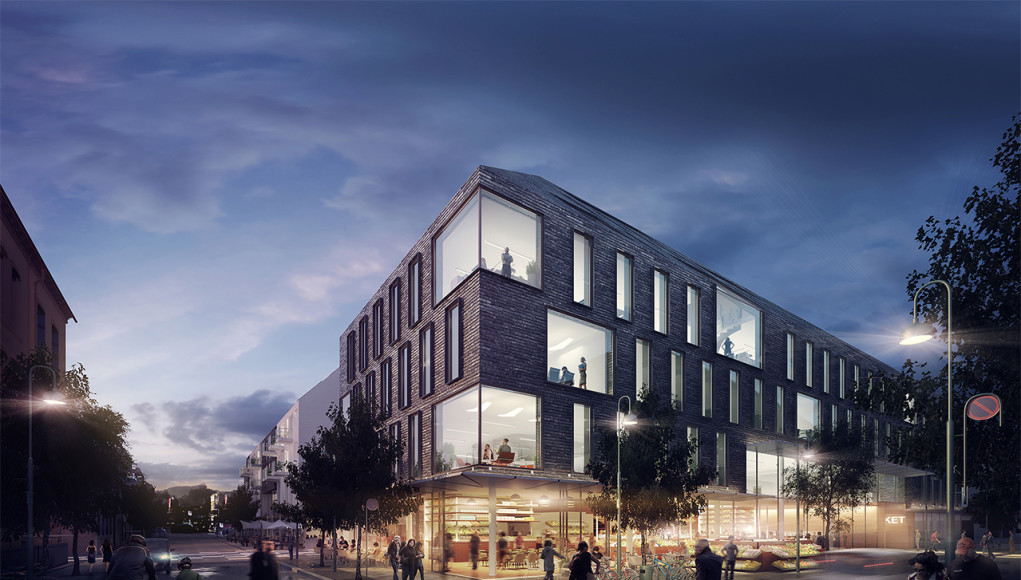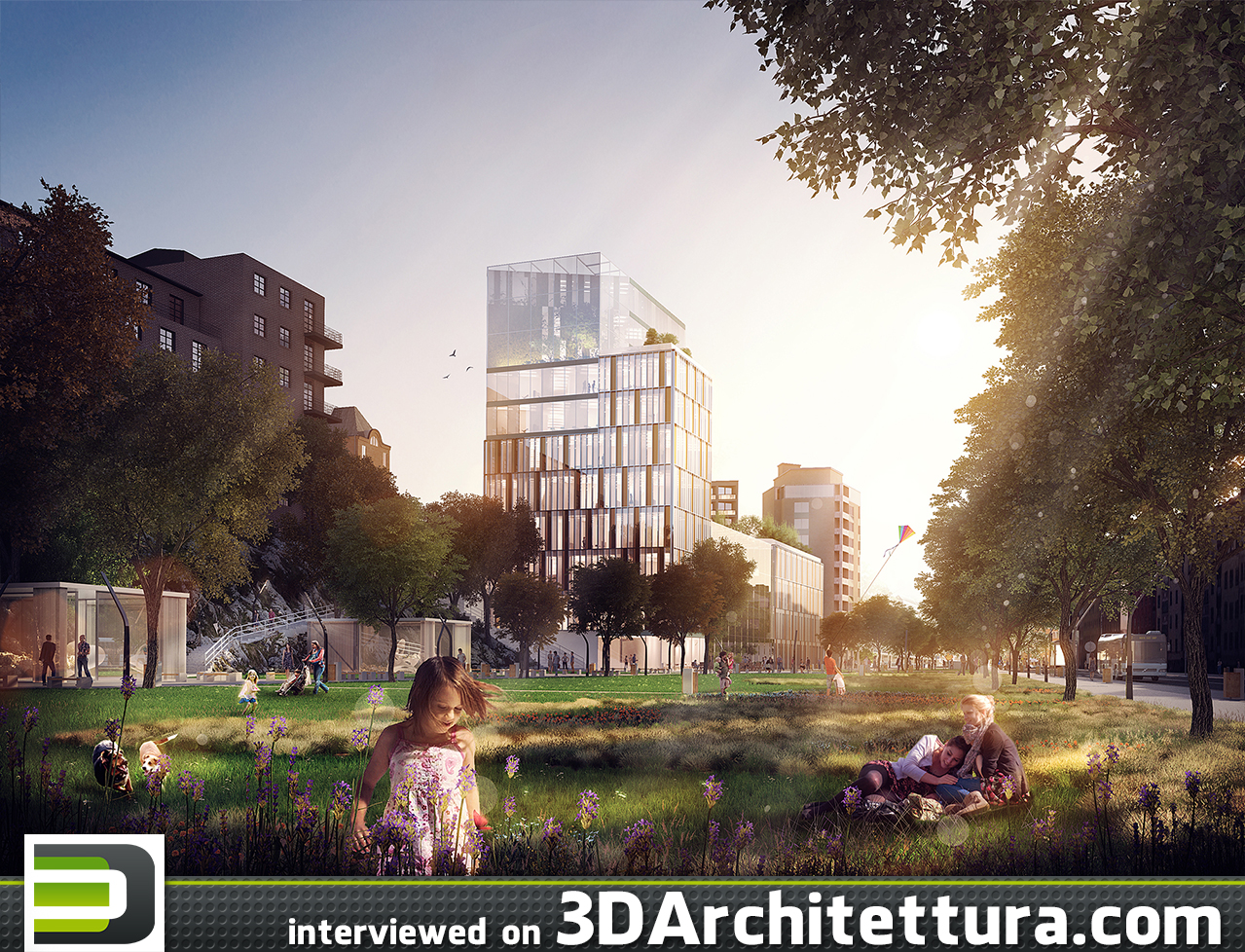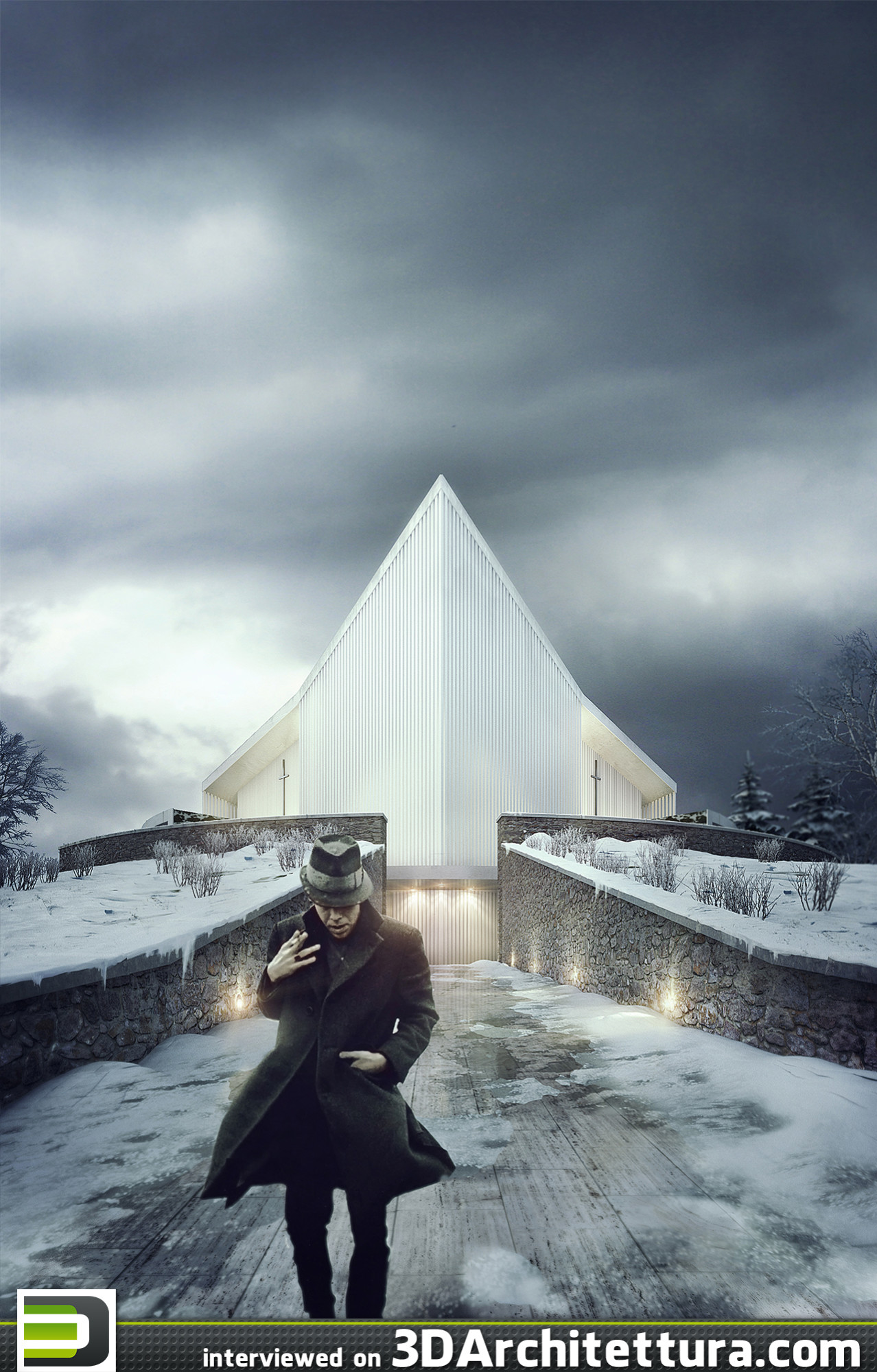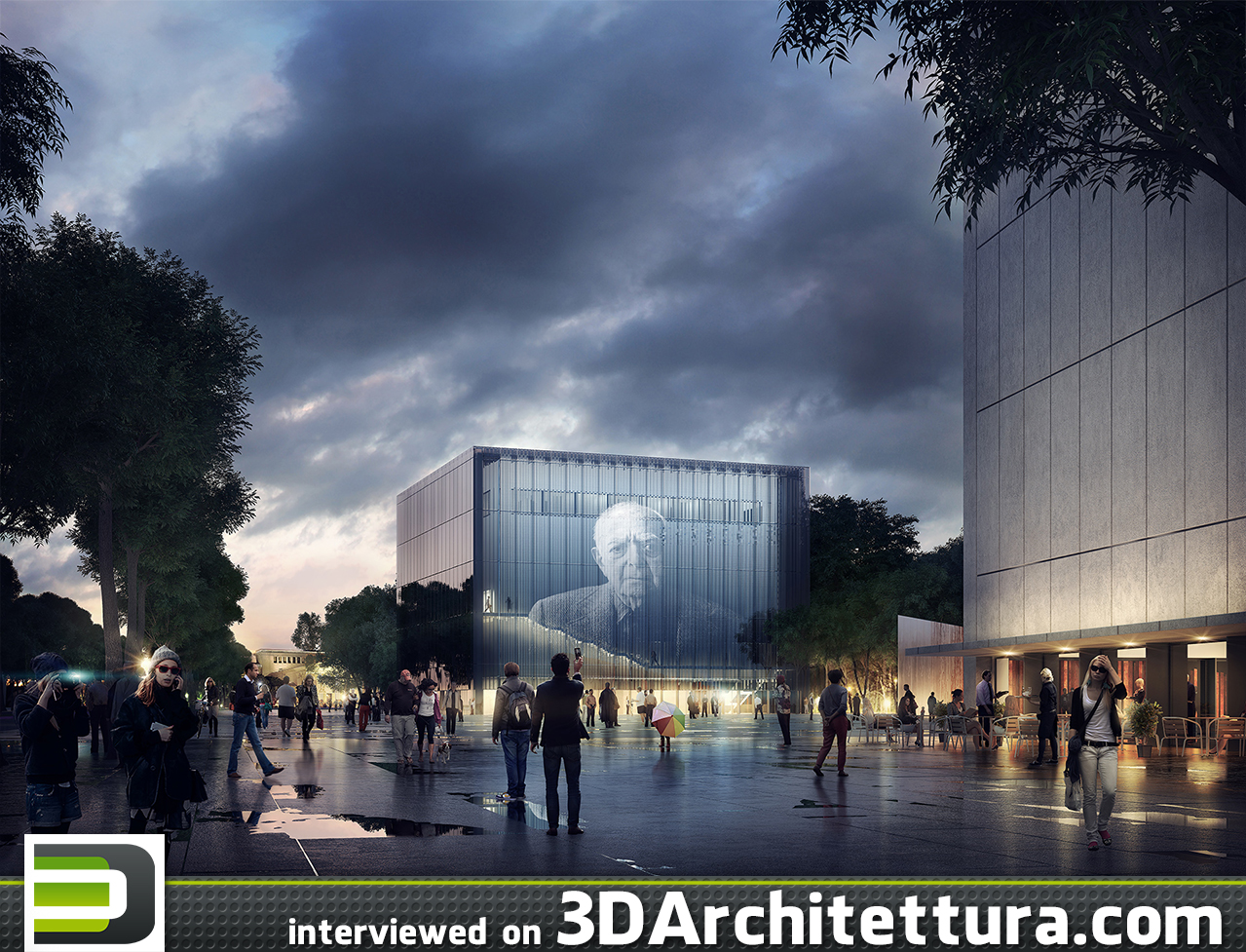Anyone can learn the software, but to be outstanding 3d-artist, I suggest to gain some sort of visual communication literacy.
Name: András Káldos
Country: Hungary
Age: 31
Job: CEO at Brick Visual
Website: brickvisual.com
SocialMedia: www.facebook.com/BrickVisual
3DA: Why have you decided to work in 3d-field and when have you started? Where you studied?
AK: I earned my degree in architecture, so it has always been the creative concept, the design that fascinated me. I started to cope with computer graphics and digital, experimental architecture before attending the university. This knowledge turned out to be very useful when looking for professional experience during my studies, and I realized that visualizations can be just as challenging as architectural planning. Over the years, this profession has become a second option for architects in Hungary due to the economic situation. This is why we have so many outstanding experts in this field. (Maybe names such as Viktor Fretyán or Tamás Medve sound familiar to the CG community. ) This was partly the reason why I started my own, Hungary-based architectural visualization company, Brick Visual.
3DA: Which software you usually use for your projects?
AK: As our services vary, the softwares we use are quite diverse too. Proportionally, image production is the most emphasized segment, so in general we use 3D Max, Vray and Adobe Photoshop. Over the past 15 years (since I started in the industry) the entire 3D software technology has evolved in an incredible way, resulting in the dependence of this profession largely on technology. So, because this advantage is a disadvantage at the same time, I believe that we have to turn our focus on values that go beyond technology. In case of image production, 70% of our workflow at Brick happens in post production with wacom graphics tablets. With this workflow, we can append additional values to our images, that not only generate 3D content but make the image engaging to the viewer.
3DA: What was most difficult for you when you just started working in 3D? And what is now?
AK: Keeping up the pace with the technological developments, and delivering 3D to the market efficiently and flexibly, while keeping the quality standards. When establishing Brick, I had already gained years of experience in architectural competitions, and we still capitalize this know-how in terms of flexibility, efficiency, deadlines and preserving of quality standards.
3DA: What you can advise to the students who are just starting their way in CG?
AK: It is one thing to know the softwares, and make 3D images, but to be a 3D artist you have to improve yourself in classical art knowledge as well. Anyone can learn the software, but in case you wish to be outstanding, I suggest to gain some sort of visual communication literacy.
3DA: What forecast you can make about the future of 3d-world in general?
AK: I can only speak in terms of architectural 3D, which will certainly move away from what it is now, so we have to keep ourselves up to date, and adopt to the market. Seeking for new possibilities, and experimenting with the latest technologies: this is what we do at Brick by our 360 view service, oculus rift or augmented reality experiments for instance.


























